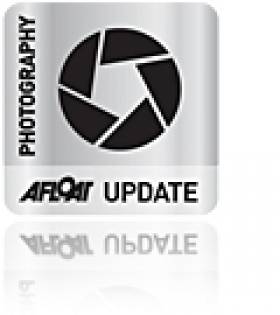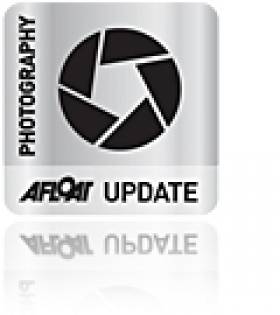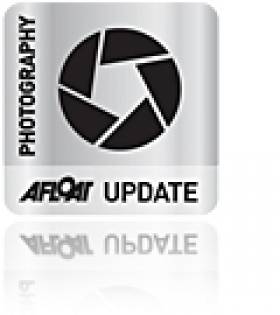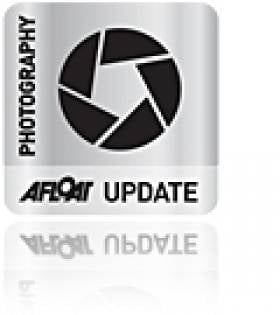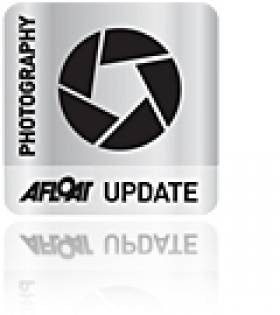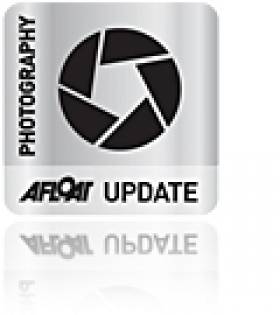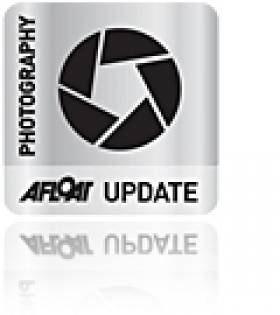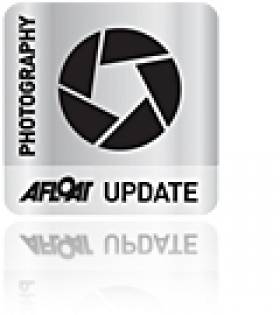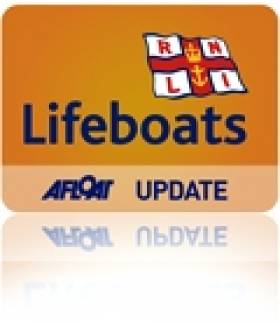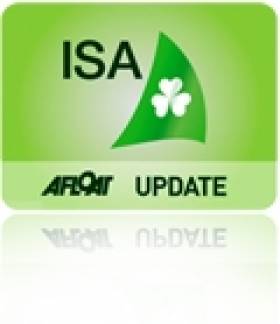Displaying items by tag: photography
NatGeo Readers' Most Impressive Photos Of Ireland
#Photos - National Geographic has compiled a gallery of some of its readers impressive photographs of Ireland's world-renowned scenery, with coastal and inland waterfront shots making up the bulk of the collection.
From the rough and tumble of surf-lashed Kinard to the tranquil still waters of Killarney National Park, the welcoming wildlife of Donegal Bay and so much more between, the wealth of vistas on our little island is truly astounding.
Cameras At The Ready For 'Wonderful Wild Wetlands' Photo Contest
#Photography - Over €500 in prizes are to be won in a new amateur photography competition to celebrate International Wetlands Day on 2 February 2014.
Held by Wexford County Council in partnership with the Irish Ramsar Wetlands Committee, the Wonderful Wild Wetlands Photography Competition is divided into two sections, with 18s and under and over 18s categories in both:
- ‘Wetlands in Wexford’ - a county competition where photographs may be taken in any location in Wexford
- ‘Wetlands and Farming’ - a nationwide competition where photographs may be taken anywhere in Ireland
The value of wetlands in the Irish landscape is that they embody and sustain a substantial percentage of our natural and cultural heritage, hosting a complex interaction of water, soil, plants and animals that fulfil many basic functions and provide important ecological services as well as being places of inspiration and consolation.
The winning images will be displayed in a special Wetlands photographic exhibition to be held in the County Hall of Wexford County Council during International Wetlands Day on 2nd February 2014.
To enter, be sure to make note of the following competition guidelines:
- All photographs must be original work, submitted as 10” (25cm) X 8” (20cm) hard copy unframed and on digitally on disc (original copies will be available for collection after exhibition)
- Please include competition category being entered, location and date photograph was taken
- Title, name, age (if 18 and under), address and contact telephone number on each entry
- Maximum of 2 entries per competitor
- 2 categories - Adult (over 18) Junior (18 and under)
- Photographs can be in black & white or colour
- Wexford Local Authority Employees are not eligible to enter
- The decision of the judging panel is final
- Please note you need a licence to take photographs of breeding birds, or any protected species, at or near their breeding site. These can be sought from www.npws.ie
The closing date for entries is Friday 17 January 2014. For submission details contact Niamh Lennon at Biodiversity & Forward Planning, Wexford County Council, County Hall, Carricklawn, Wexford or [email protected].
Awards Presented For Best Irish Coastal Photography
#Photos - Amateur snapper Carl Cutland has collected a top photography award for his image of children enjoying this year's surprise sunny summer on Galway Bay.
As the Irish Independent reports, Cutland's 'Diving Fun' took the lead in the 'People and the Coast' category in the Clean Coasts Photography Competition.
The contest is part of An Taisce's Clean Coasts programme to get communities involved in caring for Ireland's coastal areas.
And according to the organisers, entries spanned the whole coastline of the island of Ireland, capturing moments the year round.
Other prize-winning entries included this stunning shot by Jakub Walutek of Astrid, the ill-fated tall ship that ran around on the Cork coast this summer:
In other photography news, the Irish Air Corps recently published images that perfectly capture the rugged beauty of the Skellig Islands.
According to TheJournal.ie, they were taken by Sgt Damian Faulkner while on a routine maritime patrol in Kerry earlier this month.
Lifeboat Photographer Captures 'Courage On Our Coasts'
#Photography - A new book and exhibition showcasing striking photos of the lifesaving work of the RNLI were launched last week.
The Lifeboat: Courage On Our Coasts showcases over 400 iconic images captured through the lens of RNLI lifeboat crew member and award-winning professional photographer Nigel Millard, from dramatic shots of lifeboats battling fierce seas to candid portraits of the charity’s dedicated volunteer crew members, lifeguards and fundraisers.
Millard’s photos – the result of two years’ work – offer a unique eyewitness insight into the full scope of the RNLI’s lifesaving work.
To capture the images, Millard, who volunteers as a crew member at Torbay in Devon, visited RNLI lifeboat stations and lifeguard units around the UK and Ireland. At each station, Nigel carried a pager and was alerted to shouts, along with the local crew, to capture the action first-hand.
Hear Millard read an exerpt from his visit with Rosslare Harbour RNLI:
A selection of striking images from the book also features in a touring exhibition of the same name - the first time that photographs of the RNLI’s work have been made available to the public in this way. The exhibition will travel to locations including London, Manchester, Edinburgh, Cardiff, Dublin and Birmingham.
Copies of the book - written by Dr Huw Lewis-Jones, with the foreword by HRH The Duke of Cambridge - will be available to buy at the exhibition, along with other specially-designed merchandise featuring Nigel’s stunning images.
Nigel Millard says he hopes the images will give people a better understanding of the RNLI’s lifesaving work.
"My favourite photo is a casualty’s eye view," he says. "I’ve been a man overboard on exercises – once in the water, you see nothing, then just a tiny bit of orange, and it’s not the sun, it’s a lifeboat. It epitomises the work I do, and the work of the RNLI.
"I hope the exhibition will raise awareness of the charity. People who don’t know anything about rescue at sea will get to hear about it, they will know we’re here to help. Someone might be inspired to volunteer – not necessarily on the crew, but maybe as a fundraiser. Or some might wish to donate."
Dr Lewis-Jones, who accompanied Nigel on many of his photo shoots, says of the book and exhibition: "It’s a show of great photos that represent the best of the RNLI. It’s a way of reminding people that they are only ever 70 miles from the sea – we may all need the RNLI’s help.
"We’ve joined crews all around the country on shouts, but also for a cup of tea. The photos are a collection of what the RNLI family means, the true spirit of the RNLI – ordinary people doing extraordinary things."
The book’s will be available 30 September direct from the RNLI (www.rnlishop.org) as well as good bookshops and stockists including Amazon.
And in partnership with Epson, the RNLI is also running a photography competition, My Coast, while the exhibition is touring.
The charity is challenging photographers to capture what the varied and beautiful coasts of the British Isles mean to them. The winner will receive a large format print of an image of their choice from The Lifeboat: Courage on our Coasts exhibition, signed by the photographer Nigel Millard; a photo quality Epson colour printer (kindly donated by Epson); and a waterproof housing for an SLR camera and an iPhone waterproof housing (kindly donated by Cameras Underwater).
A shortlist of 10 entries will be selected by Nigel Millard. He will be looking for striking images that encapsulate the photographer’s experience of the British Isles coastlines and something of their relationship with the sea. The short-list will then go forward for a public vote on the RNLI’s Facebook page.
The closing date for entries is Monday 31 March 2014 and the winner will be notified by Monday 5 May 2014. Entries should be submitted by completing the online form at www.rnli.org/mycoast and emailing images as a JPEG file to [email protected].
For those who can’t make it to the exhibition, an online version will also be available at www.rnli.org/courageonourcoasts.
Clare Photographer Nets Top Award for 'Surfing' Dolphin
#MarineWildlife - A fantastic snapshot of a surfing dolphin has netted a Clare-based photographer the prestigious top prize at the British Wildlife Photographer of the Year awards, as the Mail Online reports.
Czech-born George Karbus captured the winning image, titled 'In the Living Room', while diving off Ballintoy in Co Antrim, when he encountered the "playful" bottlenose dolphin "that suddenly started to surf the deep tube inside the waves".
As reported by TheJournal.ie, Karbus added: “Water visibility is always very limited in Ireland, and I was very lucky to get a shot like this.”
The photographer also topped the coastal and marine category at this year's awards, and his prize photo will be featured in a book compiling the top entries.
Karbus was previously featured on Afloat.ie in 2011 for his stunning images of fin whales and dolphins feeding off Hook Head in Co Wexford.
RORC Launches Photo Contest For IRC Yearbook Front Cover
#RORC - The Royal Ocean Racing Club (RORC) Rating Office is launching an international competition next week to select the photograph that will grace the front cover of the 2014 edition of the RORC IRC Yearbook, published by Yachting World.
Entry to the 2014 Yearbook Competition, which kicks off on 15 July, is restricted to two submissions per person to be submitted by 30 August 2013.
A shortlist selected from all the entries will then be judged by Yachting World's racing and technical editor Matthew Sheahan, RORC's technical director Mike Urwin, award-winning photographer Ian Roman and marine leisure PR consultant Peta Stuart-Hunt.
The judges will be looking for an exciting image that reflects the club racing ethos of IRC rating. This may be round-the-mark action from one of your local club weekend races, a fleet shot from a weekday 'twilight' race, or perhaps a lucky catch from one of the offshore classics.
They will not be looking for the 'glamour shot' of a exotic, high-tech racing boat so much as something that encompasses everything IRC stands for - competitive racing for all.
The winner will be notified by 30 September 2013 and will receive a certificate, and have their photo featured on the cover of the 2014 RORC IRC Yearbook, with appropriate credit as agreed with the winner. There is no monetary prize.
The competition rules are available on the RORC Rating Office website HERE.
Isle of Man marine photographer Rick Tomlinson will run a one day photography workshop based from the Royal Cork Yacht Club in Crosshaven on April 6th. This includes both onshore and on the water tuition with as much time as possible spent photographing on the water around Cork Harbour. Rick is also speaking at the RCYC Spring Cruising Dinner that evening.
The workshop has limited space so a high level of one to one tuition is assured and beginners and experienced photographers are welcome to take part. Rick will show how to take great yachting photographs and how to work efficiently on the water. You will also be guided through how to set up your camera and the workflow to edit pictures plus useful tips in Photoshop. Checkout www.rick-tomlinson.com for inspiration.
Special price for RCYC members and friends is just €200 per person.
Outline schedule for 1 day workshop
1000 Meet at the RCYC: Introduction to the workshop and how to set up your camera before we take to the water.
1100 Out on the RIB taking pictures on Cork Harbour where Rick will give ideas and instruction on taking pictures of the racing yachts.
1300 Pub lunch probably on the Harbour somewhere, with informal discussion. (lunch is not included in the price)
1600 return to RCYC and review our pictures on the computer including post production importing and editing on the computer, Photoshop tips and techniques and digital workflows.
1700 finish.
What you need to bring: Camera equipment, laptop (optional), warm clothing, boots and wet weather gear. It can be very wet on the boat.
Individual places and groups of friends welcome.
Rick Tomlinson Yachting Photography Courses in Cowes
In response to many requests International Yachting Photographer Rick Tomlinson will give a one day and a two day photography workshop this Spring. The one day session is on March 17 and two days March 29/30 2013
Both will take place from Cowes, Isle of Wight, with both onshore and on the water tuition with as much time as possible spent photographing from Rick's 6.5m RIB.
Limited to just 5 people a high level of one to one tuition is assured so beginners and experienced photographers are welcome to take part. Rick will show how to take great yachting photographs and how to work efficiently on the water. Checkout www.rick-tomlinson.com for inspiration. You will also be guided through how to set up your camera and the workflow to edit pictures plus some usefull tips in Photoshop.
March 17 is a one day workshop working around the Solent Spring Series from my 6.5m RIB. With the onshore breifing and post race workflow and analysis that will take place in the new Studio in Cowes Yacht Haven. Price per person £250 includes lunch. 3 persons are required to run the course (5 max)
Outline schedule for 1 day workshop:
0900 Introduction to the workshop and how to set up your camera before we take to the water.
1000 out on the RIB taking pictures on the Solent where Rick will give ideas and instruction on taking pictures of the racing yachts.
1300 return to Cowes and review our work on the computer including post production importing and editing on the computer, Photoshop techniques and digital workflows.
1500 finish.
March 29 & 30 is a two day workshop that will follow the Easter racing events. Starting at 0930 on Friday March 29 and finish at 1700 on Saturday March 30. 2 day workshop price £400 per person. 3 persons are required to run the course (5 max)
Outline schedule for 2 day workshop:
0930 Introduction to the workshop and how to set up your camera before we take to the water.
1030 out on the RIB taking pictures on the Solent where Rick will give ideas and instruction on taking pictures of racing yachts.
1500 return to Cowes and review our work on the computer including post production importing and editing on the computer, Photoshop techniques and digital work flows.
1700 finish for the evening. Time for a beer!
Day 2
0900 Meet for the days briefing, discussion on what we have covered so far, ideas and inspiration.
1000 Out on the water shooting yachts racing and dinghies.
1500 onshore computer editing, show time and de-brief
1700 finish the course.
The exact timetable will depend on the weather, and the interests of those taking part.
What is included: 1 or 2 days of tuition, course notes, onboard picnic lunch on both days. Lifejackets.
What you need to bring: Camera equipment, laptop (optional), warm clothing, boots and wet weather gear. It can be very wet on the boat.
Not included: Overnight accommodation, evening meal or breakfast. We can recommend B&Bs and travel arrangements.
New Studio office; 2nd Floor, Cowes Yacht Haven, Cowes, Isle of Wight, PO317BD.
To book contact Rick on 01983 248512 or email [email protected]
Help Choose a Winner for RNLI Photographer of the Year
#LIFEBOATS - The shortlist has been announced for the RNLI's annual Photographer of the Year competition - and for the first time in its seven-year history, the charity is inviting members of the public to vote for their favourite.
The shortlist is now online via the RNLI Facebook page, and voting remains open till 5pm on Monday 12 November.
Among the 12 shortlisted snapshots is this stark image from the locker room at the Dunmore East lifeboat station, photographed by volunteer lifeboat crew member Neville Murphy.
You can help celebrate the work of the RNLI's volunteers by voting for your favourite image before the deadline!
#ISA NEWS - The Irish Sailing Association's Olympic Department is inviting tenders for photographic services and social media content for the Irish sailing team at the Sail for Gold Regatta in Weymouth from 4-9 June.
The tender requires attendance at Sail for Gold from Wednesday 6 to Saturday 9 June inclusive.
The photography portion involves daily coverage of Irish sailors racing with a target of 6-10 images per sailor (schedule to be agreed with support team dependant on campaign performance and availability of media boats), plus headshots of the squad and support teams in team clothing, and group shots with and without support teams.
Social media content will involve daily pre-race audio and video with the performance director; daily audio/video with sailors from the media zone; and a micro documentary (3 minutes max) on pieces of interest from an Irish perspective.
Applications for this tender should be emailed to [email protected] by the closing date tomorrow, Friday 13 April 2012. A decision will be made before 20 April to allow time for accreditation and registration for media boats.
Full details on requirements and details of rights and pricing are available on the ISA website HERE.


























